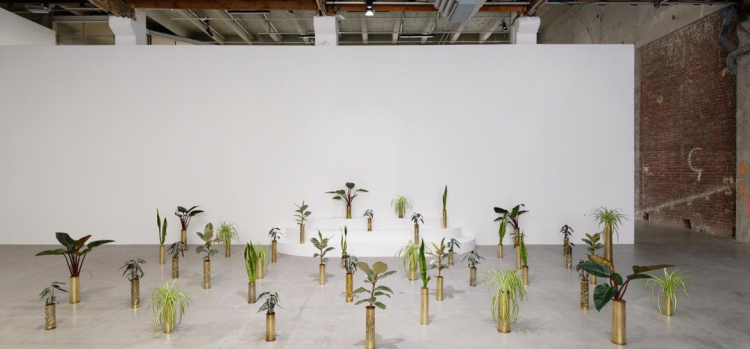"Notre Monde Brûle" Exhibit Review

In an era when the urgency and concern about our environment is becoming more serious, artists are illustrating and shaping environmental issues by expressing their ideas using newspaper, trash bins, junk objects or recycled objects. This movement, that I allow myself to call a “recycled objects movement”, fulfills the urge to create unique pieces while still caring about our environment. This creative art aims to bring environmental issues to the public eye by linking the pieces to sustainability.
The exhibition “Notre monde Brule” at The Palais de Tokyo showcases pieces that are a perfect example of this emerging art form. The exhibit sheds light on human struggle issues generated by successive conflicts in the Persian Gulf Region while integrating broadly the ecological disasters embodied by the environmental destruction caused by human activities. What caught my attention were two art pieces emerging from the same background.
Image Credit: Lara Daher
The first piece above is made out of Arabic newspaper and packaging (tea box). What is interesting about it is that the form, color and texture of the found objects are significantly local mixed with roman hieroglyphics to illustrate the roman colony. The second piece below is made of “Ras Al Abed” chocolate packaging, which is an extremely popular product in the Arab world, yet the title refers to “slave’s head”. The social effect of this piece is constructed by the symbolic meaning of the product, linking it to the authoritarian Syrian Regime that executed slavery and misery on the population. In recent years, the manufacturing company changed the name to “Tarboosh” due to the racism in the title. “Tarboosh” refers to the traditional headdress in the Arabic region, which gives the audience a cultural aspect for the piece through the choice of the packaging. This piece, binds the culture and traditional roots of the artists making it a symbolic Arabic origin piece against tyranny.
Image Credit: Lara Daher
(left) Tarboosh Chololates. (right) Traditional Headdress
The role of these pieces is to move the society towards an ecological sustainability system since it is composed of recycled locally known packaging giving the pieces a sort of belonging to the middle eastern community. The purpose from the usage of signs of commonly used products that symbolizes suppression (Newspaper, Ras Al Abed) in the middle eastern region is to send a message that one can surpass the cruelty of the government by throwing it and considering it as a recyclable item. On the other hand, by observing these beautiful pieces I felt the embedment of Art in an ecologically sustainable development process making me recall on issues like increase human waste, declining biodiversity, water pollution and climate change. Art serves as a modern educational factor to improve knowledge on environmental consequences, influencing people's behavior by enhancing their attitude towards sustainability.











